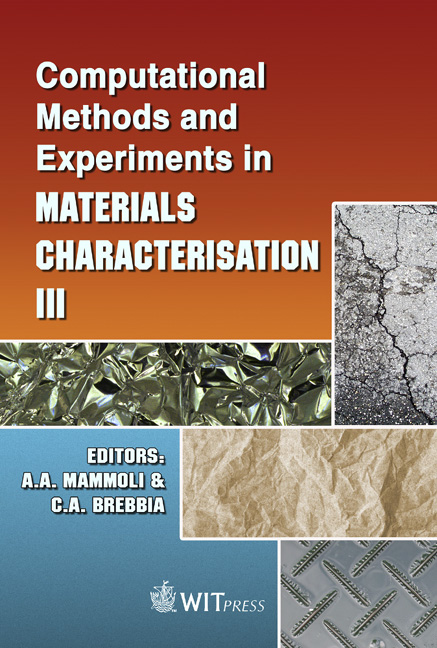Analysis Of Adiabatic Heating In High Strain Rate Torsion Tests By An Iterative Method: Application To An Ultrahigh Carbon Steel
Price
Free (open access)
Transaction
Volume
57
Pages
10
Published
2007
Size
706 kb
Paper DOI
10.2495/MC070221
Copyright
WIT Press
Author(s)
J. Castellanos, I. Rieiro, M. Carsí, J. Muñoz & O. A. Ruano
Abstract
An iterative algorithm has been developed to establish the adiabatic heating correction of flow curves for torsion tests of an ultrahigh carbon steel containing 1.3% C. High temperatures (1223 to 1473 K) and high strain rates (2, 5, 10 and 26 s-1) were used. The curves are corrected in a finite and discrete set of strain data by means of parametric derivatives and integration on the initial curve without correction. The process is repeated until the termination tolerance for the stress is less than 10-2 MPa. Usually, four iterations are needed to reach this tolerance. The corrections are bounded by the maximum of mechanical energy available to be converted into heat. The corrections are carried out until a true strain ε= 4 in order to avoid the effects of flow localization in the material. Keywords: adiabatic heating, torsion test, modelling, simulation, Garofalo equation, hot working. 1 Introduction Torsion tests at high temperatures and strain rates of materials usually show a strong increment of temperature during the test above the programmed temperature that is attributed to adiabatic heating [1]. The temperature correction due to adiabatic heating has been discussed in various works [1–6]. The following expression is usually considered: ( ) ∫ ⋅ ⋅ ⋅ = ∆ ε ε ε ε σ ρ η ε max . ) ( d C A Ti (1)
Keywords
adiabatic heating, torsion test, modelling, simulation, Garofalo equation, hot working.





